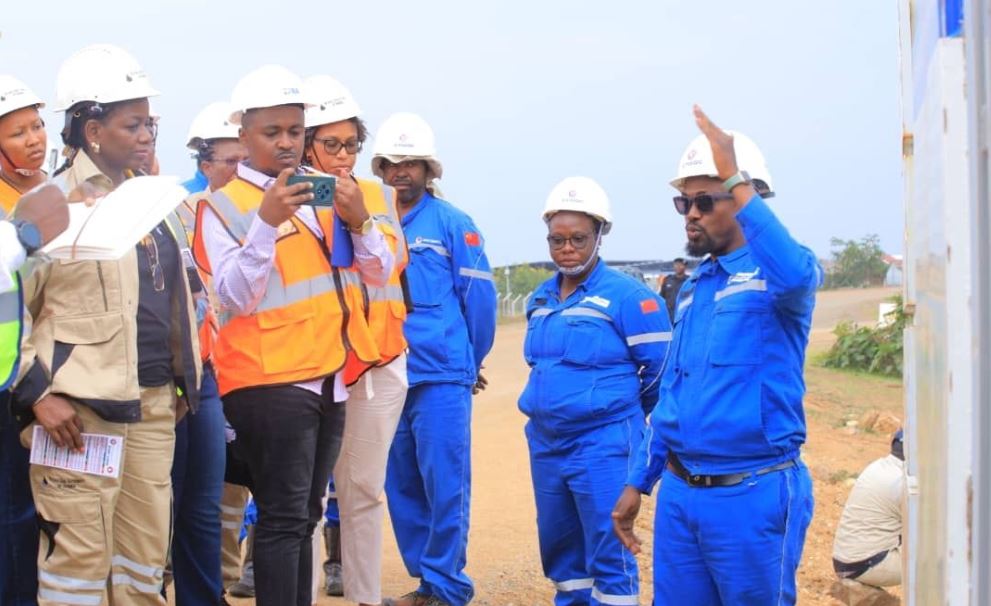
Uganda’s burgeoning oil and gas sector is rapidly moving from promise to tangible progress, as evidenced by a landmark five-day benchmarking and learning exchange visit currently underway.
The Petroleum Authority of Uganda (PAU), led by Board Chairperson Ms. Lynda Biribonwa, is hosting sister agencies from Kenya’s Energy and Petroleum Regulatory Authority, Tanzania’s Petroleum Upstream Regulatory Authority (PURA), and the Zanzibar Petroleum (Upstream) Regulatory Authority.
This crucial gathering, held from June 16th to 20th, 2025, underscores a powerful commitment to regional energy synergy, regulatory excellence, and shared prosperity.
The visit, which began with a significant Memorandum of Understanding (MoU) signing in Entebbe (June 16th-17th), highlights the collaborative spirit driving East Africa’s energy future.
This formalisation of partnerships is critical for leveraging existing expertise and resources in a sector that is inherently specialised, technologically driven, and capital-intensive.
As Ms. Biribonwa eloquently stated, “The East African region is one of the most prolific frontier areas for Oil and Gas exploration and development. The collaboration among regulators is paramount to leverage the existing expertise and resources.”
Unveiling Uganda’s Oil Infrastructure
Following the formal agreements, the delegation embarked on immersive field visits scheduled for June 18th-20th to key oil and gas infrastructure, offering a firsthand look at Uganda’s readiness for commercial oil production, projected to begin in late 2025 or early 2026. The itinerary includes:
EACOP Pump Station 1
This visit to one of the critical nodes of the 1,443 km heated pipeline, which will transport crude oil from Uganda’s Lake Albert oilfields to the Tanzanian port of Tanga, showcases the significant progress being made.
As of May 2025, construction of the East African Crude Oil Pipeline (EACOP) reached 60.6% overall completion, with engineering nearly finalised and major construction milestones achieved.
The pipeline is poised to be one of the largest infrastructure investments in the region, bringing substantial economic benefits to both Uganda and Tanzania.
Kabalega International Airport
A vital logistical hub for the oil and gas sector, Kabalega International Airport, located in the Kabale Sub-county of Hoima district, is nearing completion with an expected handover to the government in September 2025. This airport, with its 3.5 km runway and capacity to accommodate multiple cargo aircraft, is designed to facilitate the transportation of heavy machinery and equipment crucial for the Tilenga and Kingfisher projects, as well as the upcoming oil refinery.
CNOOC Kingfisher Development Site
The delegation is exploring the heart of Uganda’s upstream operations, including the well pads, the Central Processing Facility (CPF), and the picturesque Escarpment viewpoint.
The Kingfisher Development Project, operated by CNOOC Uganda Limited, is one of the two upstream oil projects alongside TotalEnergies’ Tilenga. Significant progress has been made, with 13 wells drilled by March 2025 and the CPF nearing completion.
The Kingfisher field is estimated to hold 560 million barrels of crude oil in place, with a projected production of 40,000 barrels per day.
Waste Management Facility
A crucial aspect of responsible resource development, the visit to Luweero Industries’ Waste Management Facility, underscores Uganda’s commitment to environmental safeguards.
This facility plays a vital role in safely managing and treating waste generated from crude oil drilling, demonstrating the high level of expertise and attention required to maintain ecological balance in energy extraction and production.
Pillars of Regional Collaboration
The focus areas of this benchmarking visit capture the core principles guiding East Africa’s energy development, which include;
Regulatory Excellence and Collaboration
By sharing best practices and harmonising regulatory frameworks, the participating nations aim to create a more attractive and stable environment for investment while ensuring responsible operations.
Environmental and Social Safeguards
A strong emphasis on minimising environmental impact and ensuring benefits for local communities is central to the development of the sector.
Local Content and Job Creation
The oil and gas sector is expected to be a significant driver of local employment and capacity building, with initiatives in place to empower Ugandan businesses and the workforce.
Partnerships for Shared Growth
The spirit of “Umoja ni nguvu” (unity is strength) is a driving force because regional collaboration is seen as essential for unlocking the continent’s vast energy resources and ensuring energy security for all.
This comprehensive exchange signifies a new chapter for Uganda’s oil and gas sector, one defined by strategic partnerships, a commitment to sustainable development, and a shared vision for a prosperous energy future for East Africa.
